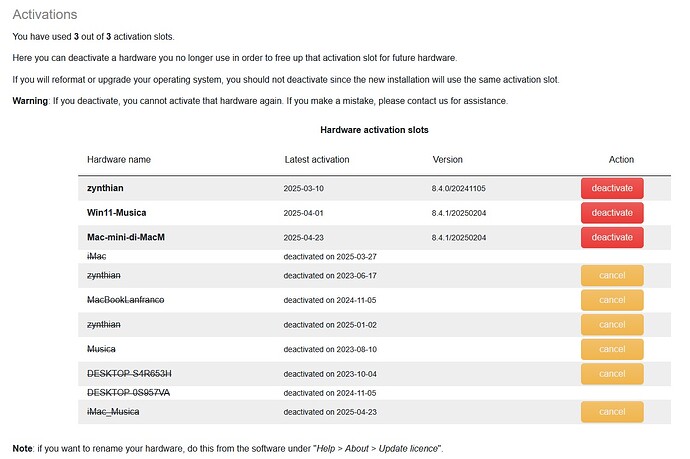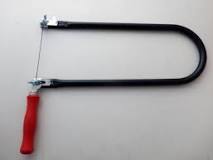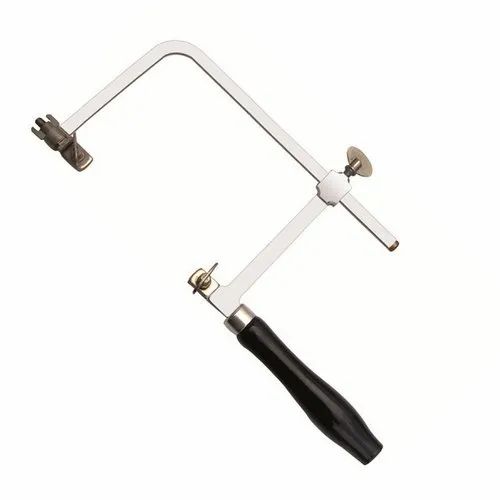If I’d buy a licence of Pianoteq 8 Stage, would it possible to use on my two Zynthians?
Is the use on 2 Zynthians legal?
What are the recommended performance parameters for a V4 and a Rpi5?
You can use the subscription on 3 devices. I used the subscription on 2 pi5’s ( and needed to delete the other PI5 license… 2 licenses where occupied by 2 Windows computers) but not simultaneously… so I am not totally sure, but Modartt registers each RPI5 seperately. So I suppose you can use it simultaneously on 2 PI5’s.
To be sure … check with Modart
Cheers,
Maarten
Totally yes. You can install your Pianoteq license in 3 devices and AFAIK, you are not breaking any clause of the license.
It depends of your playing needs and priorities. The default parameters work reasonably well in RPi4. With Pi5, you can run at full rate or increase the number of voices, or both!
Regards,
Evergreen request for the ability to group Zynthian devices under a main device’s UI.
It would be extra great for me, because there is no way I’m taking a dremel to my expensive synth that I am unable to repair myself when my hand slips, so because of when I pulled the trigger on buying, I’m stuck with a Pi4 in my Zynthian for a good long time to come.
But I already own a Pi5 and a sound card for it, so if I could just add that device’s capacity into my main Zynthian’s UI while running it as a sidecar via midi, I could use my Pianoteq license at full rate today. Given we’re talking about midi devices that need only to respond at the speed of human keyboard playing, seems pretty doable to me.
If I ever get the time, I plan to grab that OSC interface that someone made for us, and twist that into a “master zynthian controller” function, but time is never very available anymore these days…
You can use the license on three devices. If you no longer use one, you can block the license on that device and activate it on another. The only problem is that if you deactivate a PC or Zynthian, you SHOULD never be able to reactivate it again. However, if you contact Moddart, they’ll reset the list of activated PCs and you can start over.
As you can see, I used the license on many machines that I later sold.
Hi @jtode ,
You are absolutely right. A dremel is not the right tool for something like that. You could consider using a fretsaw or a goldsmith’s saw with a blade for metal.
This way, you have much more control and the chance of a slipping hand is minimal.
You do need a lot of patience, though, as it’s not very fast.
Kind regards,
Hans.
I hope I didn’t come across as bitter, cause even with the Pi4 it’s still my favorite musical device that I own. The only thing it can’t do for me, the only thing, is what we are discussing in this thread, Pianoteq at full rate. As far as “early adopter got hosed” experiences go, this one feels really really good, like, I got hosed, but it was because I was on fire from the rage of paying for commercial garbage.
It’s not for lack of confidence either - I fixed a bunch of worn-out keys buttons on my DX7s, for instance, but that’s old DIP tech and breadboard-style components. But these newfangled SMD devices are meant to be worked on by machines. And mostly, we’re too broke at the moment to replace the board if I break it, and I would not expect Jofe to take on that risk as a non-commercial developer of, again, my favorite musical device in the world.
Meantime, I can run pianoteq on my laptop, which I would have with me on any musical excursion, and if I’m ever sufficiently employed at playing out again that I need to worry about a lightweight, portable rig, I can just mount an extra Pi dedicated to Pianoteq somewhere in the rig, and control it like any other device.
I do feel, though, that headless, “sidecar” Zynthians, where you could offload heavy chains to auxiliary devices, is both doable and would be super cool. Our power levels would be theoretically without limit! POWER!
Hi @jtode ![]()
I must admit that it is not completely clear to me what would be your suggestions or requirements, for a unified graphical interface that manages more Zynthians at once.
Are you talking about a sort of über-meta Zynth OS instance, capable of addressing both the 16 internal tracks and more groups of 16 external tracks performed through Midi, by other RPis or Zynths?
Or, are you maybe referring to a DSP/CPU workload parser, similar to the DSP Bridge released by the 563XX emu community, capable of sharing excess calculations weight among two (or more) Raspberrys?
By the way, as for me I have completely given up on using Pianoteq on Pi4, because its spectral response at half the base sample frequency is simply not viable for my ears. I have been surprised by how well it sounds at 96000 Hz with full 128 voicing, why still maintaining its general metallic imprint, which doesn’t fit very well my style of playing and musical aesthetic. And, please note that I do love the metallic/bellish/resonant area of synthesiser timbres, but for programming and orchestration, not for playing polyphonically with my hands.
I believe that where Pianoteq 8 really shines is in its usage as a modern-contemporary piano, at full sample frequency with wide reverb and delay.
As a solo classical instrument, is not (yet) there for my taste.
PS: Concerning driving more Pis/Zs from the same Zynthian interface, have you considered - within the limit of 16 tracks - creating a part of the chains as Midi tracks, thus off-loading their musical data to a series of external Pis addressed by Midi Out, through 5-DIN Midi cables?
In this way, you could potentially devote a specific Pi5 just to running Pianoteq at full specs, and the trick could be repeated for a Pi5 just hosting DSP563XX emulators.
What you could not do in this fashion is managing their settings and GUIs directly, but what about viewing them just when needed, using a smartphone or tablet on VNC?
I suspect that for many live performances, Pianoteq on RPi4 (with reduced bandwidth) would be fine. Few rock musicians take a Steinway on stage, instead they love the Yamaha upright. Similarly, a zynthian with Pianteq running at lower internal samplerate may good enough on most rock (and pop, jazz, etc.) stages. You would probably want to use full bandwidth when recording or if performing solo (classical) piano. Of course, we each have our own threshold of acceptance. I play rock and blues guitar so the piano is less important to me… until it is! Ironically, my stage zynthian has RPi5 whilst my studio zynthians are RPi4. I should probably do something about that…
Like other said, there are 3 devices you can activate.
One thing I witnessed: I recently burned a new image on another SD card while having no spare machine in my Pianoteq licence (3/3). I just activated it on the new image and it just used the previous zynthian machine licence one. Don’t know if it only works when using the same device name (“zynthian”).
This information has of course nothing to do with using Pianoteq on more machines than allowed. The previous SD was abandoned.
The licence is tied to the hardware. You can rebuild the zynthian and rename it as long as you use the same RPi. Once you have unregistered a device, you cannot re-register. Max 3 concurrent registered devices per license. You can use one license for the devices but you cannot repeatedly swap licenses between devices. This is a very fair licensing system and, if you screw up, Modartt are pragmatic about resetting a device. They won’t do it repeatedly.
This is exactly what I have in mind, with deep integration into the native UI.
Re 16 tracks: first off, some of these synth/DSP engines are extremely heavy, and unless you’re making a very skilled set of choices, I would be surprised if anyone uses more than 4-8 tracks on a given Zynthian, especially on a Pi4 or older, without encountering the dreaded, fun-destroying xrun.
The one under discussion in this thread, Pianoteq, is more or less the poster child of what I mean. Would it be viable, do you think, on a Zyn5.1 with Pi5, to use 16 tracks, with one of those tracks being full-rate Pianoteq? I think even with the extra power of a Pi5, that’s not really a viable choice.
I think 16 tracks is the maximum that a human can think about in a performance situation (studio is another matter) without either losing track (haha) of what they’re doing, or surrendering control to machines, Arps, Seqs, AI probably, which I would argue, crosses a line away from musicianship and into… let’s generously call it production.
I definitely do not want sets of 16 tracks. I want one set of 16 tracks, my only set, with each track assignable in terms of resources - either use the “Main” device, the one with the silicon buttons and touchscreen, or offload the processing to a Headless “Client” (Aux? Drone? Slave?) Zynthian with its own audio output device that is connected via Midi, or by the USB-B port maybe, but controlled from the Main device in all other respects.
I believe those Access Virus emus are also very processor-hungry as you mentioned, so it seems entirely feasible for a serious synth user to want to be able to pack several Pis under a single Zynthian’s metaphorical hood. More literally, in a rack, probably. Ideally with some really slick rack hardware too. :>
edit: obviously what I’m proposing would be limited in various ways, especially as regards audio DSP applications - two discrete devices can definitely play in sync, but we can’t just pass audio packets back and forth over midi, so probably it would be limited to synths and other applications with a one way midi->audio flow.
It could work with daisy-chaining the output of a headless “co-worker” to the input of a “ui-chief”. The quality of modern audio cards is enough to do that.
The more elegant way could be using the Ethernet instead, routing MIDI and audio over RTP, which has very small latency and would require no extra hardware for the “co-worker” except for the bare Pi with cooler, a power supply and a network cable, if the builtin Auto MDI-X once gets enabled for Zynthian. The co-worker could even boot from the ui-chief via Ethernet, or additional MicroSD to boot the co-worker could simplify things even more.
There are NetJack and and Zita-njbridge protocols already available for linux!
One problem still exists: The licenses of some software, where each Pi would need a single license, or part of a license pack. Licenses may prohibit the use of the same license on more than one computer simultaneously, even though they allow an amount of installations. But this problem is to be left to the user, I think.
Some experiments have been made with this.
It is a world where one runs into propriety systems pretty quickly.
What you’re describing, if it could be pulled off, would be the uber-amazing version of it.
As it stands, synth and EDM people fully expect to be wrangling a herd of devices, which is why they invented Midi; this is to say, I think my midi-only concept, with some external mixer handling the outputs, is the one that could be done in a reasonable amount of time by a small team. If I had the time and leisure, I could make it happen myself, I think, but I’d need a lot of time. :>


